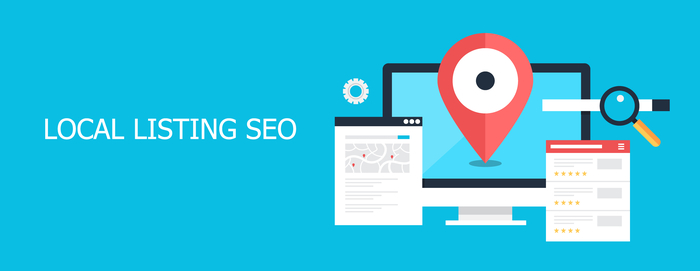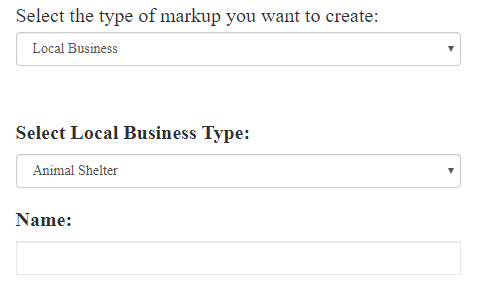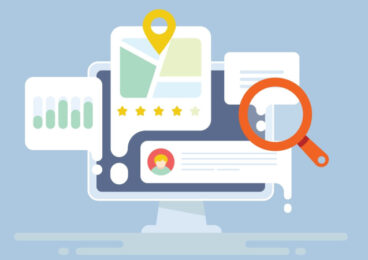 Reading Time: 4 minutes
Reading Time: 4 minutesWhen you first sign up for local listing management, one of the first things addressed is the updating of any incorrect business information on Google and Bing. Another priority is to ensure that any syndication uses the correct information. From that point, it’s a matter of making sure other directories/aggregators that pick up the information update whatever information they have.
The question that always follows this is “What now?” Proper syndication will take care of several of the top-noted ranking factors (from Moz 2018 Local Search Ranking Factors), including the following:
- Link signals
- Citation signals
- Google Business Profile (GBP)
Reviews
What about the rest? One item people ask about is reviews. If I had a dime for every time a client or someone at a conference asked, “How do we get reviews?” I’d be able to pay off the college debt for every person in the U.S. Well, maybe not the whole U.S., but a good part of Kansas.
Getting reviews can be tricky for some companies, depending on how they pull customer information and the nature of the interactions between such companies and their customers. Regardless of interactions, there is one way to start getting reviews.

If you have repeat customers you know by name or by face, chances are you thought about them when you started reading this sentence. If they haven’t yet left reviews for your business, that’s where you can start. Although the velocity of reviews can also have an impact, if you have few or none, you need to start now. At MozCon 2018, Mike Ramsey stated that the average business had over 30 Google reviews. The question now becomes, Do you have at least 30 reviews? No? Then you’re behind.
Repeat and favorite customers aside, there are numerous resources and tools to help a business of any size start getting reviews. If you need help building a case and your company has several locations, pick the top five to ten locations and do some competitive research. First, determine how many reviews each location has, whether or not the reviews have context to them, and how many reviews you have on average.
Next, do that same research on the local competition for those locations and see who has more reviews overall and on average. If they haven’t been doing reviews for years, then that number should be your first goal for the number of reviews to achieve. If they have several hundred reviews, then your first goal should be to get each of your locations least 30 reviews (with context).
On-Page Signals
If your business information is up to date and correct on Google and elsewhere but not matching on the local pages Google Business Profile is linking you to (you do have GMB linking to local pages, right?), then you need to update your on-page information. Consistency of online business information also refers to your own website. Additionally, any keywords/categories you’re targeting on GMB should also be present on the local pages and in the title tags. It’s about tying the relevancy to each other. The citations and on-page information should match and should be as closely relevant to each other as possible. If you’re targeting catering on your Google local listing but not mentioning it anywhere on your website, why are you targeting it at all? Additionally, although a schema isn’t a “map pack” ranking factor, it can help with localized organic ranking. Even if you don’t believe this, Google has stated that Schema Markup does help them better understand the page and content.
Schema Generation
Schema generation is something that I’ve worked with developers to implement because it has to be “templated” to some degree, but in 2019 there are a lot of tools that help even the most novice coders create this for their site.
Joe Hall has a great schema generator on this site. Below is a screenshot of his generator:

Just pick the correct drop-down menu options and fill out the information below them. As a precaution, I would take the code generated and run it through Google’s structured data tester before passing it on to development to add to the local pages.
Depending on the number of locations your business occupies, this should be a good way for you to accomplish some actionable items for your locations without leaning too heavily on development. Just validate the code with Google and pass it on, identifying which pages the markup should go to.
Social Signals and Action Signals
The last item I’ll cover has to do with social signals. Some businesses have a different Facebook and Twitter account for each location, whereas some prefer to use a single corporate account for each social-media platform. Regardless of your approach, make sure the right profiles are being used and linked not only to the listings but to the website as well. Engaging with users on social media is a great way to get them to interact with your locations, which in turn can help bolster your behavior signals.
The behavior signals I’m referring to are the click-throughs and click-to-calls from the listings themselves. Utilizing Google Posts is a great way to stand out and drive customers to your locations with discount codes or special events you can promote.
In the end, importantly, there is a lot that can be done in addition to merely making the data accurate. It’s just a matter of knowing what can be done, how to do it, and the impact it can have. And if you’ve gotten to this point, then you already know what to do next.
At Vizion Interactive, we have the expertise, experience, and enthusiasm to get results and keep clients happy! Learn more about how our Local Listing Management services and Franchise SEO can increase sales and boost your ROI. But don’t just take our word for it, check out what our clients have to say, along with our case studies.




